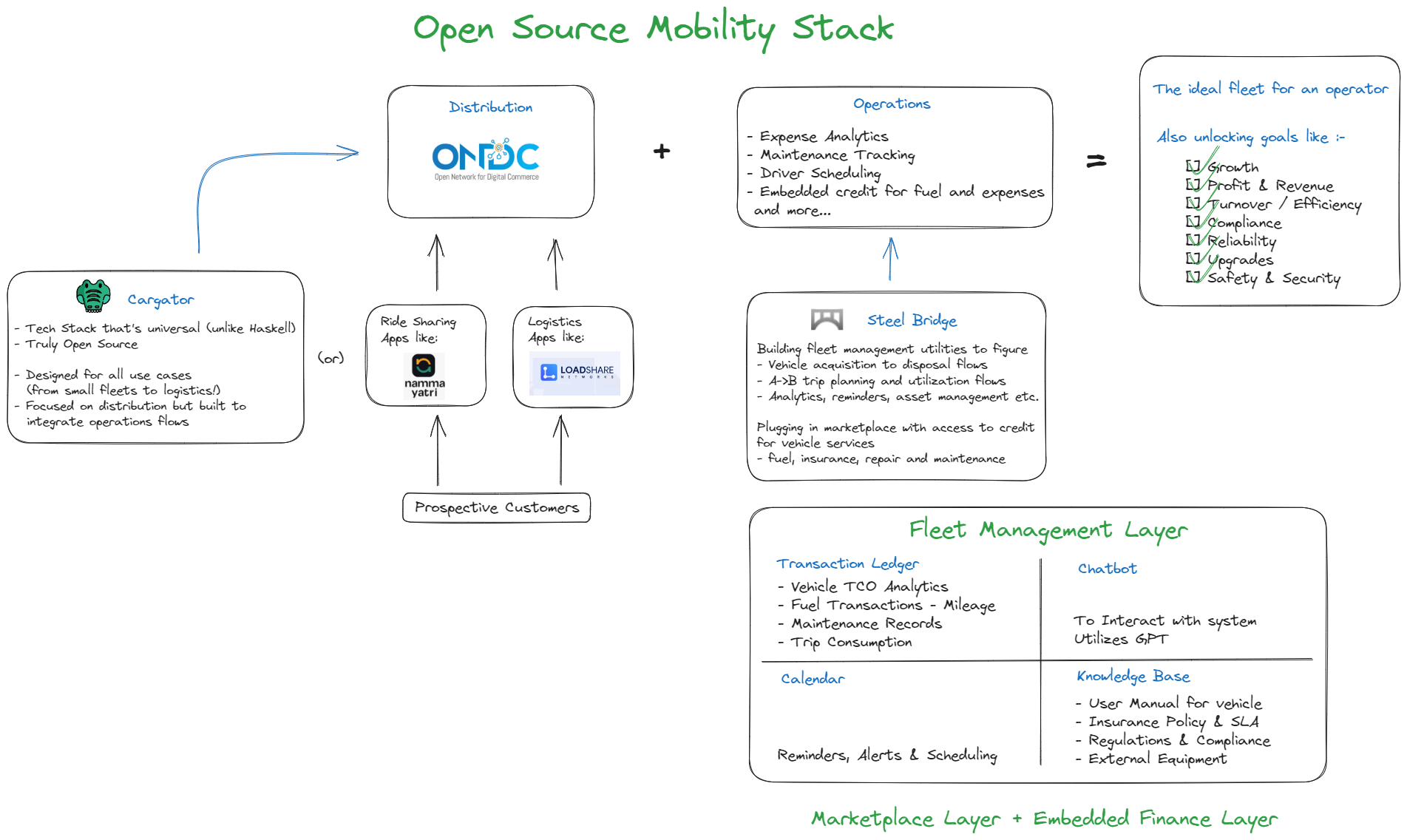Over the past year I’ve been involved with reviewing the tech stack of several startups in the location based space – such as ride share apps and delivery apps. One of my main observations is that every one of these startups is essentially building the same tech stack from scratch. And more importantly, it’s being built inefficiently both from a cost and tech feature perspective. One of these startups is blowing close Rs. 20 lakhs a month on their Google Maps API calls!
It would be like coding up your own blogging platform or e-commerce website. Today, if you want a blogging platform you can choose between WordPress, Wix, or SquareSpace and getting going in hours. If you are a direct to consumer (DTC) brand and need your own e-commerce platform then Shopify is the only answer. But, if you are building a location type service…there is nothing.
Welcome to CarGator

This is where CarGator fits in, it’s something that I have been thinking about with several other like minded people who feel there needs to be a UPI like service for mobility/location services. With the government pushing ONDC as an alternative to the big commercial platforms like Amazon and Flipkart, there will also be a need for mobility services as well.
Imagine you are a high-end taxi service in Bombay with 50 well-maintained cars. You have a couple options: 1. Plug into the Uber platform and have them take a large commission from each ride. 2. You create your own app but this will be costly and more importantly discovery of your service will be tough. With ONDC, it will level the playing field between the big boys like Ola/Uber and this new high-end taxi service. So discovery will not be an issue.
However, what about the technology requirements for this small company? Just like the other startups I reviewed their tech costs would be high and it would make the venture unviable. Enter CarGator, its a complete open-source solution that has a backend service that would eventually connect to the ONDC platform using the Beckn protocol. The front-end apps used by the drivers and consumers would also be open-source.

Open-Source
Yes, there is something called Namma Yatri that is already available in Bangalore and it’s open source. Namma Yatri is a peer-to-peer platform with no middle men and the full amount goes to the driver. If I’m not mistaken the backend server is open-source and written in Haskell but I don’t think the driver and consumer apps are open-sourced yet. It’s a great initiative and has been getting many rave reviews by both drivers and consumers. It’s also on the radar of Uber as a potential threat to their business model.
So if CarGator is open-source and free to use how does this turn into a real revenue generating business? Just like when UPI was launched and everyone was processing UPI transactions on their apps, all the FinTech companies complained about not making money. Guess what, the government didn’t care and kept on pushing for wider adoption of UPI and now it’s become the de-facto standard for sending money in India. FinTech companies were forced to think outside the box and generate income from other services. The game plan for CarGator is similar, make money from hosting the server, provide advanced analytics, car insurance, workshop tie-ups, GPS tracking, plug-ins, driver training, advanced mapping options, etc…
How Can You Get Involved?
Are you interested in helping to build this open-source mobility vision? Please visit our website at https://cargator.org/ or drop us an email at [email protected].
Also, if you know anyone that has a fleet of under 50 vehicles and is willing to be a beta tester for the CarGator tech stack let us know. Of course, this would be FREE of cost.
Some of the people involved in getting this off the ground include – Joel Johnson, Mayank Jha, and Riddhesh Ganatra. Joel has a website Steel Mobility, which is absolutely worth checking out.
Potential Use Cases
This will be a running list of potential use cases that the team comes across.
- High end cab service – This one I touched upon in the blog post. But extend that idea to a tier 3/4 city, the current technology options would be very cost prohibitive.
- Family fleet – suppose you have 8-10 vehicles and want to have a better way of tracking your cars.
- Service delivery fleet – Suppose you have 30 e-bikes and are hyper-local to a specific area like Bandra Kurla Complex (BKC) to provide 5 minute delivery times.
- Hotel fleets – right now, most of these operations are running on Excel and WhatsApp.
- Heavy machinery – keep track of cranes, tractors, etc…

